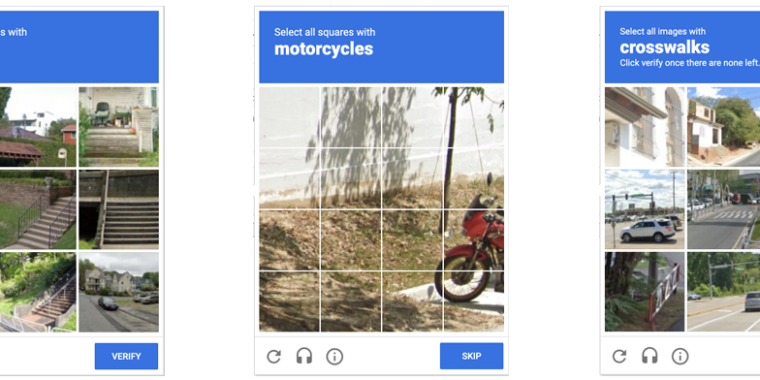- cross-posted to:
- [email protected]
- cross-posted to:
- [email protected]
Anyone who has been surfing the web for a while is probably used to clicking through a CAPTCHA grid of street images, identifying everyday objects to prove that they’re a human and not an automated bot. Now, though, new research claims that locally run bots using specially trained image-recognition models can match human-level performance in this style of CAPTCHA, achieving a 100 percent success rate despite being decidedly not human.
ETH Zurich PhD student Andreas Plesner and his colleagues’ new research, available as a pre-print paper, focuses on Google’s ReCAPTCHA v2, which challenges users to identify which street images in a grid contain items like bicycles, crosswalks, mountains, stairs, or traffic lights. Google began phasing that system out years ago in favor of an “invisible” reCAPTCHA v3 that analyzes user interactions rather than offering an explicit challenge.
Despite this, the older reCAPTCHA v2 is still used by millions of websites. And even sites that use the updated reCAPTCHA v3 will sometimes use reCAPTCHA v2 as a fallback when the updated system gives a user a low “human” confidence rating.



I fucking hate these. I’ve seen old people that don’t know any better get stuck on these for at least 30 minutes.
Same. That’s why Buster is my most recent must-have browser extension, alongside such greats as ublock and sponsorblock.
it’s super ableist. if someone has poor vision or colorblindness chances are they’re going to miss things.
I have regular everything and I still fuck them up. “click the ones with a fire hydrant”. But a tiny piece of fire hydrant is spilling into another box. Does it count? Does it not count? Good luck!!
I had one the other day that was deep fried jpegs to the max. Like, what the fuck am I supposed to do.
Sprinkle powdered sugar on them. Delicious deep fried jpegs.
They offer a sound option right below.
a hard to see option, aptly enough